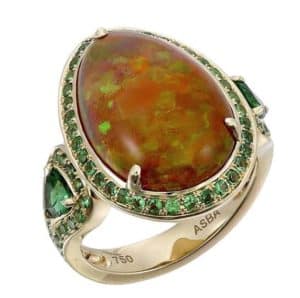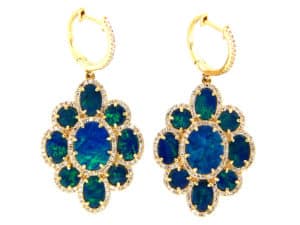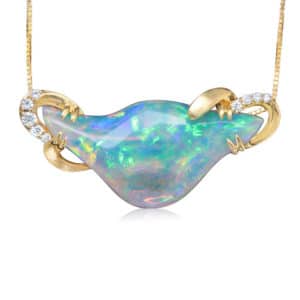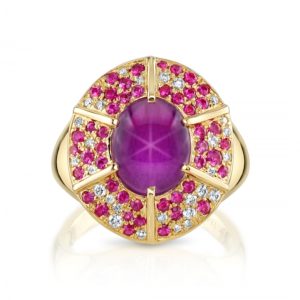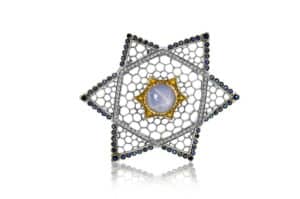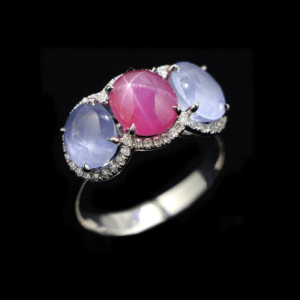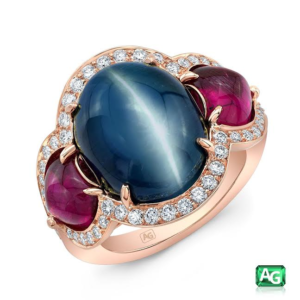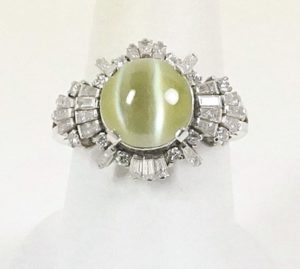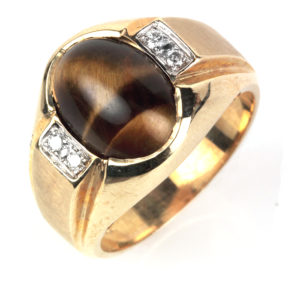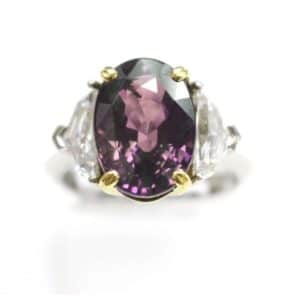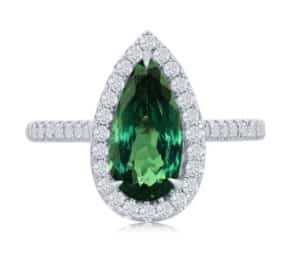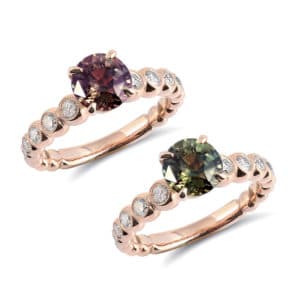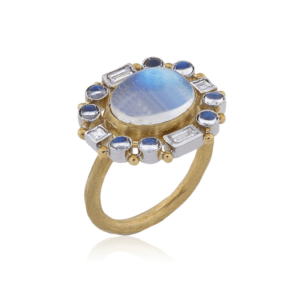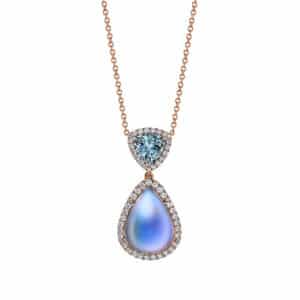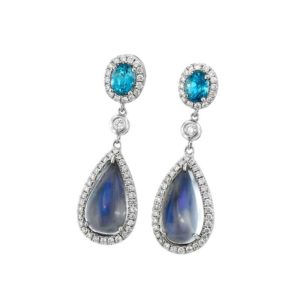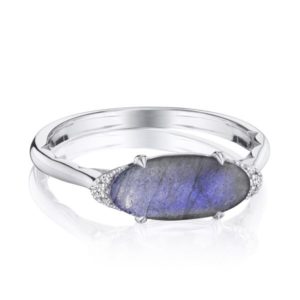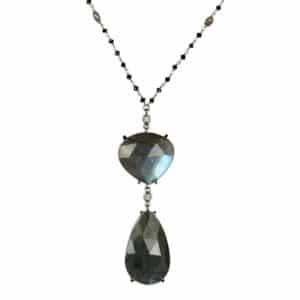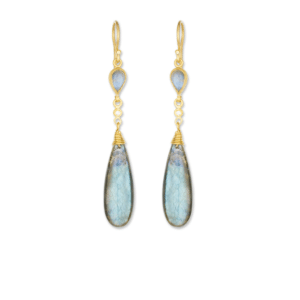There are several varieties of gemstones that display optical phenomena, which describes the many ways light interacts with the structural features or inclusions (internal characteristics) in the gemstone. Often these gemstones will be fashioned in a particular way that best displays these effects.
The science of optical phenomena can be fascinating, although the mystery and allure of these effects are what initially attract us! Below are six of the most familiar (and magical) displays of optical phenomena in gemstones.
Play-of-Color
Play-of-color is created by a combination of diffraction and interference, and is the result of the microstructure of opal: the chameleon of a thousand colors and October’s birthstone!
Opals are made up of many layers of small, stacked spheres of silica. These spheres diffract light, splitting it into a spectrum of colors. The layers of these spheres create interference allowing certain colors to dominate, depending on the angle the opal is viewed.
Asterism
Asterism, or stars, relates to the four- or six-rayed star pattern of light produced by the fibrous inclusions, elongated needles, or growth tubes in a gemstone. This singular, celestial-like phenomenon is best seen in a gemstone cut en cabochon.
Chatoyancy
Chatoyancy [sha-TOY-an-cee] is also known as “cat’s eye.” Fine needle-like or fibrous inclusions within the gemstone are what causes this effect. Again, stones fashioned as cabochons display this effect the best.
Color Change
A small number of gemstones display the color change optical phenomena. Depending on the lighting environment, the color change appearance can vary due to the shifting wavelengths. The technical term for this is photochromism or photochroism; “color-change” is a lot easier to say!
The best-known color changing gemstone is alexandrite. When viewed in sunlight, it appears greenish. When placed under incandescent light, it appears reddish. Other varieties of color-changing gemstones include sapphire, garnet, spinel, diaspore, and tourmaline.
Adularescence
Adularescence is the phenomenon typically seen in moonstone, which is a member of the feldspar family. It produces a billowy soft blue to milky white light that appears to move across the gemstone. This occurs when light hits the alternating layers of albite and orthoclase, which are two differing forms of feldspar within the gem.
The layers of feldspar interfere with the light rays causing them to scatter and the eye to observe adularescence. The effect is best seen when the gemstone is cut en cabochon [en CAB-ah-shawn]—that is, with a polished, domed top and a flat or slightly rounded base.
Labradorescence
Labradorscence [lab-ra-dor-es-cence] is an optical characteristic often seen in labradorite. The effect is a spectacular play-of-color that is metallic or iridescent, displaying blue, green, red, orange, and yellow. This is an interference effect within the gemstone caused by internal structures that selectively reflect only certain colors.
Are you ready to see some of these displays in person? Visit an American Gem Society (AGS) jeweler near you and ask to see some gemstones that exhibit optical phenomena!
